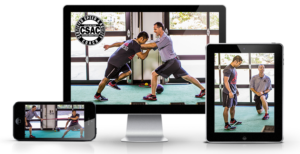
The Truth About Dodgeball and Tag
Today’s guest post comes from Lee Taft, creator of the Certified Speed and Agility Coach (CSAC) offering, which is on sale for $100 off through the end of the week. I’m a big fan of this resource and would strongly encourage you to look into it if you work with athletes in any capacity. Anyway, enjoy the post! -EC
If we listen to those making the decisions to eliminate dodgeball and tag in Physical Education (unfortunately there are some PE professionals not doing their best, so it appears these games are useless or harmful) we might come to the conclusion they are correct in doing so. But, if we edit the purpose and role of these “types” of activities, we see just how WRONG they are.
1. Dodgeball should be the culmination of a well thought-out and progressed throwing, catching, and agility unit. Students from primary grades on should learn how to properly throw, hit still targets at various heights and angles, and catch a ball coming at them from different angles and speeds (in primary grades, sometimes we just want kids to be able to touch the ball as it comes near them to develop tracking and limb location).
2. We need to progress to throwing at a target in which the target is moving, AND when the student who is throwing is moving, AND when both the target and student is moving. This teaches leading and directional aiming skills. And, it teaches students to predict intersection points.
3. We need to use a type of ball that takes fear out of catching, throwing, or being hit. There is nothing wrong with getting hit by a ball. It teaches kids how to protect themselves from objects coming at them. It sharpens their reflexes/reactive abilities. It trains their feet, core, and vestibular system to quickly protect through bending, twisting, jerking away, ducking, dodging while maintaining spacial awareness and balance. These strategies are very important to acquire and develop at young ages!
4. Catching is a fundamental tracking skill that allows for advancements to sports requiring a racquet, stick, or bat. When kids learn to catch, they are creating awareness of limb length to reach length. This, in turns, allows them to make adjustments to their limb length plus an implements length (e.g., stick, bat) and an oncoming ball in order to strike or catch it.
5. Tag teaches problem solving with regards to several factors. These factors are how much speed is needed to solve a problem of tagging or not getting tagged. When their speed isn’t “good enough,” they now select abilities of creating angles that can “even the playing field” and solve their problem. They use fakes, and spins, and change of pace to elude – as well as tactics to avoid being faked.
6. Games that involve avoiding being struck by a ball or tagged by a classmate drive to the heart of the CNS. It requires the student to learn from their environment and problem solve. These activities are primitive in nature and TAKING THEM AWAY ERODES at these primitive skills that give us foundational movement skills, tracking skill, timing skills, targeting skills, and evasive skills. When we lose touch with these skills (or abilities) we subject these potential future athletes to being exposed on the playing fields with less athletic armor.
Stop looking at these types of activities as useless. They carry a huge primitive foundational movement and developmental package. Use them in favor of our kids.
As I mentioned, Lee’s certification is actually on sale through the end of the week for $100 off the normal price. If you’re looking for top notch direction in coaching movement training with your athletes, look no further. You can check it out HERE.




